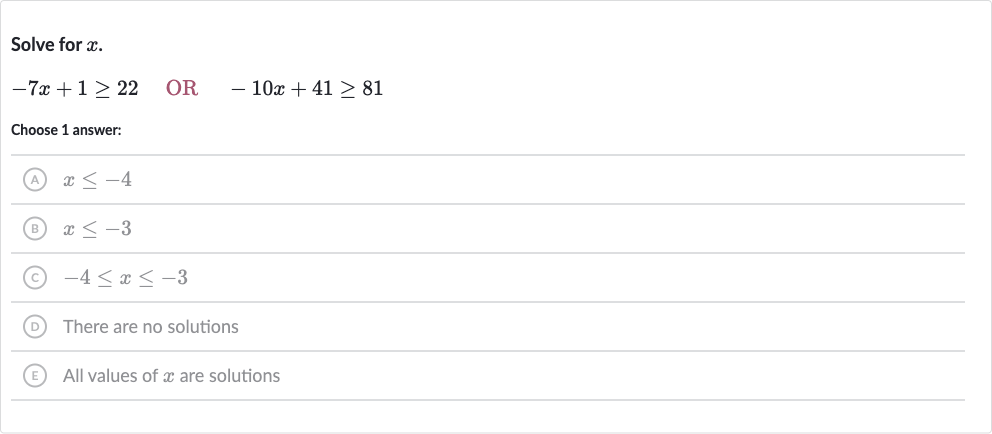Full solution
Q. Solve for .Choose answer:(A) (B) (C) (D) There are no solutions(E) All values of are solutions
- Solving the first inequality: First, let's solve the inequality .Subtract from both sides to isolate the term with .Now, divide both sides by , remembering to reverse the inequality sign because we are dividing by a negative number.
- Solving the second inequality: Next, let's solve the inequality .Subtract from both sides to isolate the term with .Now, divide both sides by , again remembering to reverse the inequality sign because we are dividing by a negative number.
- Combining the inequalities: Now we have two inequalities: from the first inequality, and from the second inequality.Since we are looking for values of that satisfy either inequality (this is an "or" problem), we take the union of the two sets.The solution set is all values that are less than or equal to , which includes all values that are less than or equal to .
- Final solution set for x: The final solution set for x is , because this includes all the values that are also less than or equal to .
More problems from Is (x, y) a solution to the system of linear inequalities?
QuestionGet tutor help
QuestionGet tutor help
QuestionGet tutor help
QuestionGet tutor help
QuestionGet tutor help
QuestionGet tutor help
QuestionGet tutor help
QuestionGet tutor help

